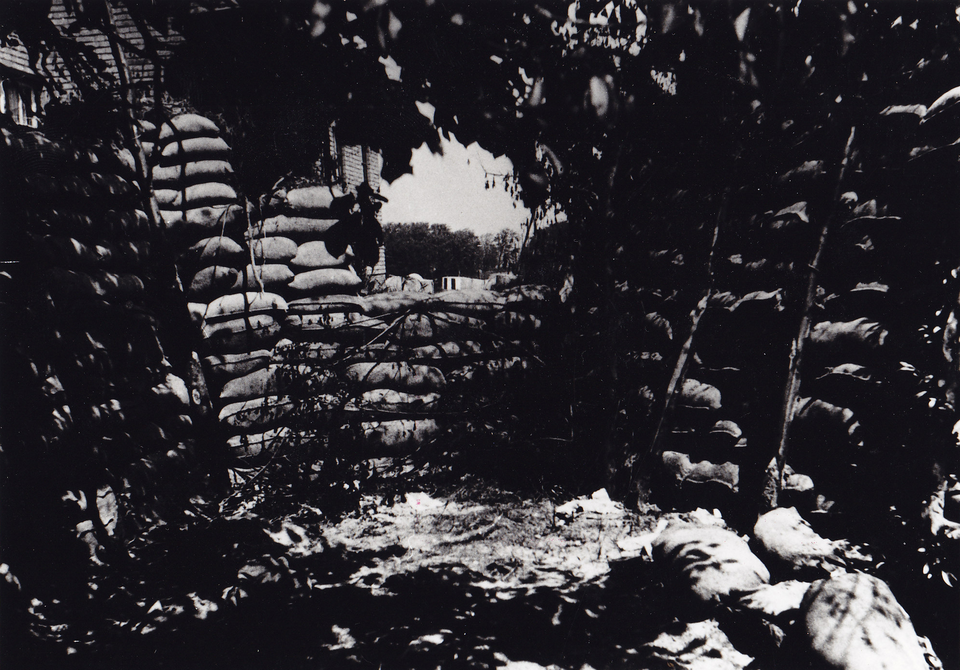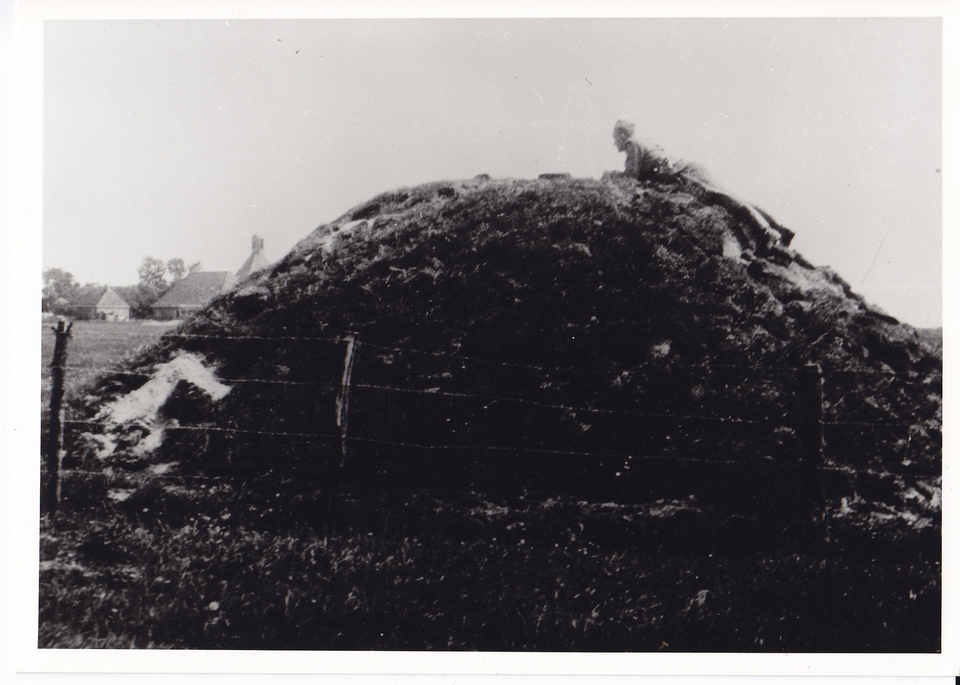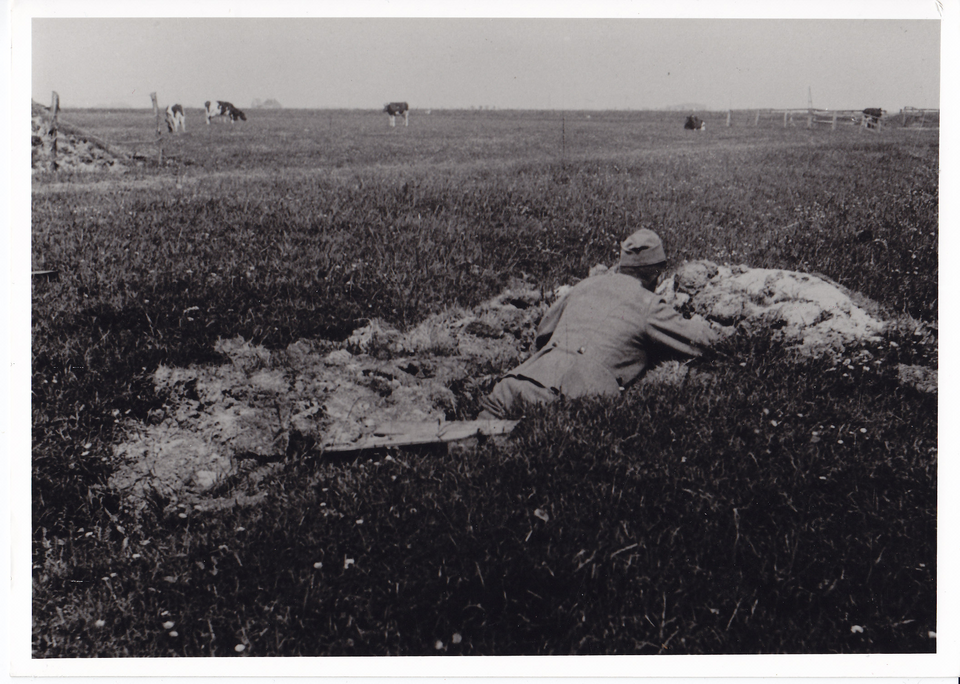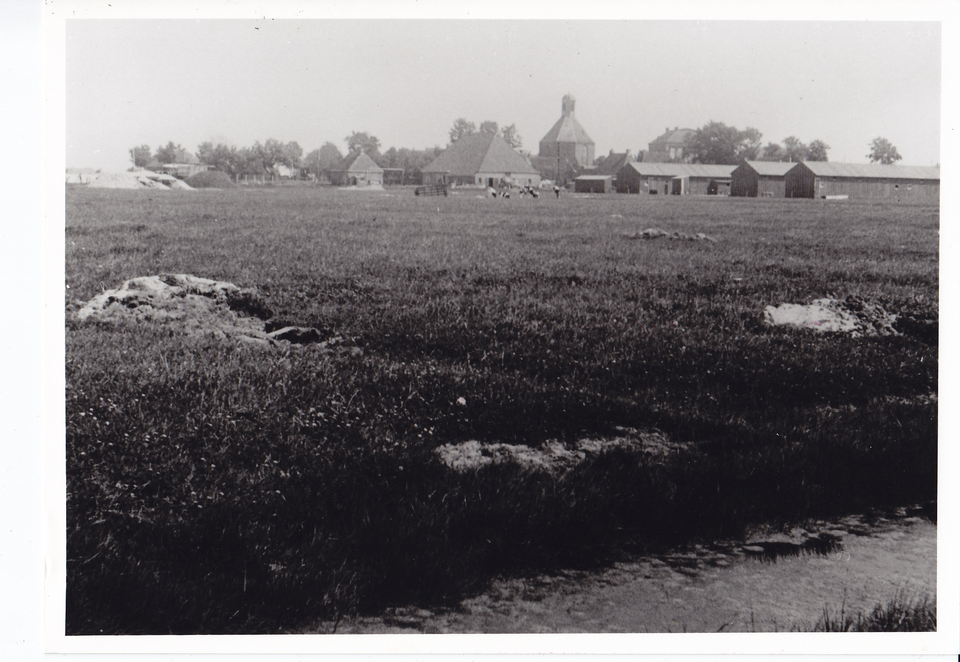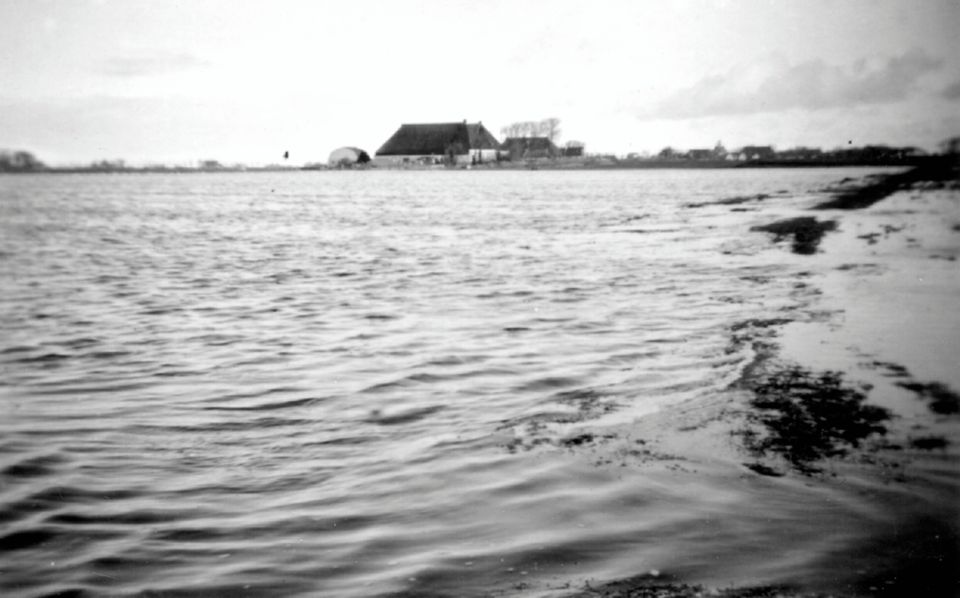Stelling Wons
There was a defence line east of the Afsluitdijk in the province of Friesland, before the casemates in Kornwerderzand: Stelling Wons. This was a 9-km curved defence line that ran from Zurich in the north, along the Gooiumervaart and the Melkvaart via Gooium, Haaijum and Wons to Makkum. The line was divided into 3 sections: section Zurich, section Wons and section Makkum.
Stelling Wons had to prevent the Germans from gaining access to the Afsluitdijk and the Frisian coast. The fortification was under the command of Stelling Den Helder. Stelling Wons was manned by around 1,400 men (including the retreating troops), mainly Frisians.
The buildings at Stelling Wons were made of wood and dirt and looked like giant molehills in the fields. The rising groundwater made digging ditches and trenches impossible. The enormous mounds really stood out. Originally, there were also plans to build sturdier forts, but they could not be carried out in time. Wood and dirt could not withstand artillery fire and air raids like the cement casemates in Kornwerderzand. This led to the crew nicknaming the fortification ‘Wee-ons’.
On 11 May 1940, when the Netherlands had been at war for just one day, the Germans arrived near the Afsluitdijk. Stelling Wons was the only thing standing between them and the Afsluitdijk. The Germans attacked Stelling Wons in the early morning of 12 May. At first, the Dutch troops were able to push back the Germans with machine gun fire, mainly just to slow them down, so that the Dutch troops could retreat over the Afsluitdijk. The locks at Makkum were also opened to flood the area. Unfortunately, this was not very successful because the wind blowing in the wrong direction had caused low water levels in the IJsselmeer.
Some people claim that the Frisian defenders ran away as soon as they saw the enemy approaching. Nothing could be further from the truth. Although the earthen ‘casemates’ were quite easily disabled and they were forced to either retreat or surrender, the Germans were met with fierce resistance. The exhausted Dutch troops did not surrender until the last of the ammunition for the one cannon they had had been fired.
